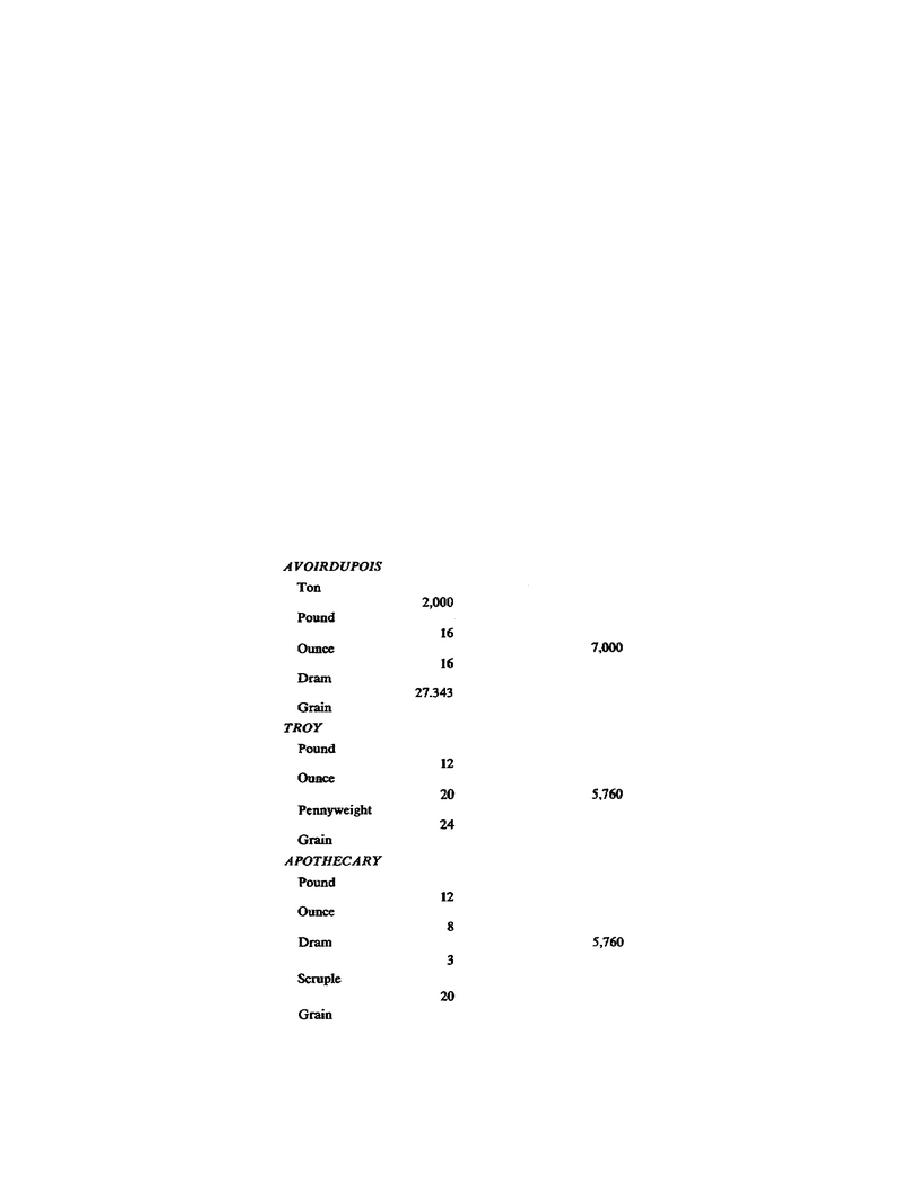
SM0486
weight of the unknown by extracting the square root of the product of the two
weighings. You can approximate the true value of the unknown mass simply by taking
the average of the two weighings (one half the algebraic difference of the two
added to the smaller).
Because our description of the substitution method of
weight measurement was quite extensive, an expansion is not necessary.
3.
ANALYTICAL (MICRO) BALANCE
a. In this section we discuss the conversion of units between the
avoirdupois, troy, and apothecary mass measurement systems.
In addition, we
discuss factors which must be considered in mass measurements.
The factors
discussed are buoyancy volume, density, and sensitivity.
After we establish
relationships between buoyancy and volume and density, we discuss the sensitivity
of a balance. The section ends with explanations of the construction and operation
of a typical analytical balance.
b. Mass Measurement Systems.
Although the kilogram is an
accepted standard
for mass measurements, most manufacturers use the avoirdupois
system, which is
based on the ton, pound, dram, and grain. The basis for any of
the three systems
mentioned is the grain.
The grain, which is the same in all
three systems, is
defined as being equal to .064798918 grams, or conversely:
15.432356 grains = 1 gram
The relative magnitude of the units in each systems follows:
132


 Previous Page
Previous Page
